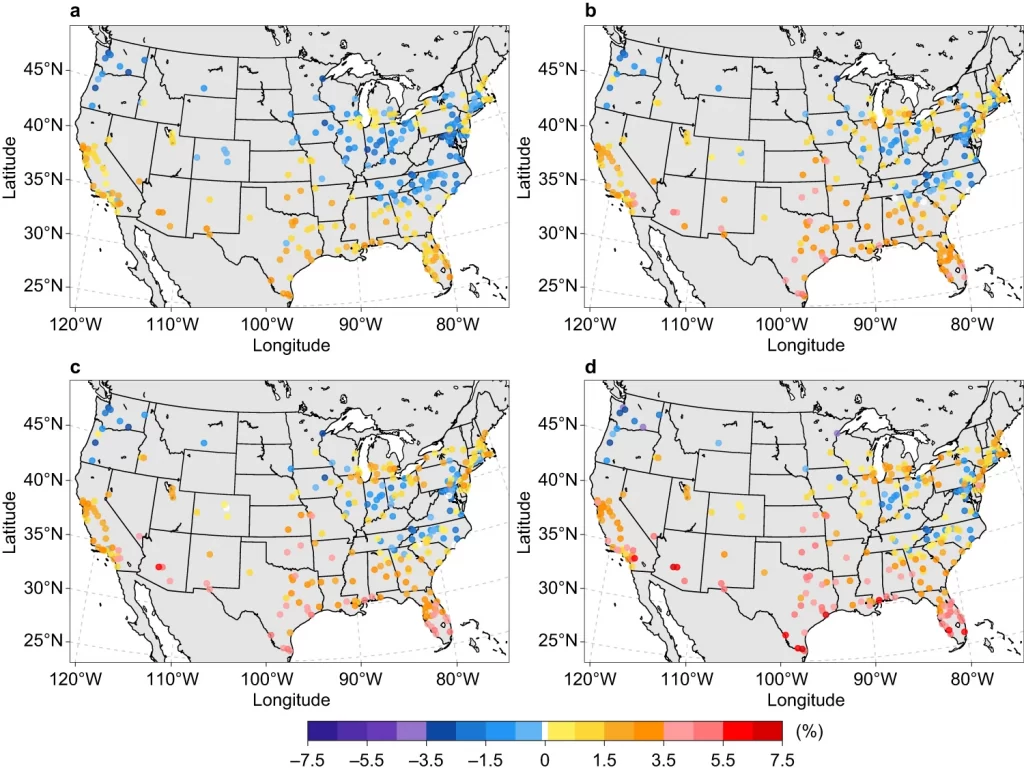Our new paper, “Impacts of climate change, population growth, and power sector decarbonization on urban building energy use“, is published in Nature Communications (IF: 16.6).
The paper and its supplement can be downloaded at https://www.nature.com/articles/s41467-023-41458-5.
Authors: Chenghao Wang, Jiyun Song, Dachuan Shi, Janet L. Reyna, Henry Horsey, Sarah Feron, Yuyu Zhou, Zutao Ouyang, Ying Li, and Robert B. Jackson
Abstract: Climate, technologies, and socio-economic changes will influence future building energy use in cities. However, current low-resolution regional and state-level analyses are insufficient to reliably assist city-level decision-making. Here we estimate mid-century hourly building energy consumption in 277 U.S. urban areas using a bottom-up approach. The projected future climate change results in heterogeneous changes in energy use intensity (EUI) among urban areas, particularly under higher warming scenarios, with on average 10.1–37.7% increases in the frequency of peak building electricity EUI but over 110% increases in some cities. For each 1 °C of warming, the mean city-scale space-conditioning EUI experiences an average increase/decrease of ~14%/ ~ 10% for space cooling/heating. Heterogeneous city-scale building source energy use changes are primarily driven by population and power sector changes, on average ranging from –9% to 40% with consistent south–north gradients under different scenarios. Across the scenarios considered here, the changes in city-scale building source energy use, when averaged over all urban areas, are as follows: –2.5% to –2.0% due to climate change, 7.3% to 52.2% due to population growth, and –17.1% to –8.9% due to power sector decarbonization. Our findings underscore the necessity of considering intercity heterogeneity when developing sustainable and resilient urban energy systems.
DOI: https://doi.org/10.1038/s41467-023-41458-5

